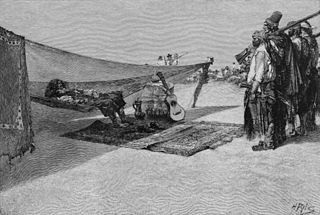| |||||
| Decades: | |||||
|---|---|---|---|---|---|
| See also: | Other events of 1928 · Timeline of Nicaraguan history | ||||
Events from the year 1928 in Nicaragua.
| |||||
| Decades: | |||||
|---|---|---|---|---|---|
| See also: | Other events of 1928 · Timeline of Nicaraguan history | ||||
Events from the year 1928 in Nicaragua.
| | This section is empty. You can help by adding to it. (October 2013) |

Nicaragua, officially the Republic of Nicaragua, is the largest country in Central America, bordered by Honduras to the north, the Caribbean to the east, Costa Rica to the south, and the Pacific Ocean to the west. Managua is the country's capital and largest city. As of 2015, it was estimated to be the third largest city in Central America. Nicaragua's multiethnic population of six million includes people of mestizo, Indigenous, European and African heritage. The main language is Spanish. Indigenous tribes on the Mosquito Coast speak their own languages and English.

William Walker was an American physician, lawyer, journalist, and mercenary. In the era of the expansion of the United States, driven by the doctrine of "manifest destiny", Walker organized unauthorized military expeditions into Mexico and Central America with the intention of establishing private colonies. Such an enterprise was known at the time as "filibustering".

Augusto C. Sandino, full name Augusto Nicolás Calderón Sandino, was a Nicaraguan revolutionary and leader of a rebellion between 1927 and 1933 against the United States occupation of Nicaragua. Despite being referred to as a "bandit" by the United States government, his exploits made him a hero throughout much of Latin America, where he became a symbol of resistance to American imperialism. Sandino drew units of the United States Marine Corps into an undeclared guerrilla war. The United States troops withdrew from the country in 1933 after overseeing the election and inauguration of President Juan Bautista Sacasa, who had returned from exile.

Harry Schmidt was a United States Marine Corps general. During World War II, he served as the commanding general of the Fourth Marine Division during the battles of Kwajalein in the Marshall Islands and Saipan in the Mariana Islands, and as commanding general of the Fifth Amphibious Corps during the battles of Tinian in the Marianas and Iwo Jima in the Volcano Islands.

Keller Emrick Rockey was a highly decorated lieutenant general in the United States Marine Corps, who commanded the Fifth Marine Division in the Battle of Iwo Jima during World War II and the Third Amphibious Corps during the occupation of North China following the war.

Luis Mena Vado was the President of Nicaragua from 27 to 30 August 1910, after the fall of the government of General José Santos Zelaya. He later became acting President in rebellion. Mena was a conservative, part of the coalition government that also included liberal Juan Jose Estrada and conservatives Emiliano Chamorro and Adolfo Diaz.

Juan José Estrada Morales was the President of Nicaragua from 29 August 1910 to 9 May 1911.

The first USS Sloat (DD-316) was a Clemson-class destroyer in the United States Navy following World War I. She was named for John Drake Sloat.

La Paz Centro is a town and a municipality in the León Department of Nicaragua.

The United States occupation of Nicaragua from 1912 to 1933 was part of the Banana Wars, when the U.S. military invaded various Latin American countries from 1898 to 1934. The formal occupation began in 1912, even though there were various other assaults by the U.S. in Nicaragua throughout this period. American military interventions in Nicaragua were designed to stop any other nation except the United States of America from building a Nicaraguan Canal.

Major General Logan Feland was a United States Marine Corps general who last served as commanding general of the Department of the Pacific. Feland served during the Spanish–American War, the occupation of Veracruz (1914) and in World War I, where he was in command of all troops during the Battle of Belleau Wood.
The Academia Nicaragüense de la Lengua is an association of academics and experts on the use of the Spanish language in Nicaragua. It was founded in Managua on May 31, 1928. It is a member of the Association of Spanish Language Academies. His banned by Ortega's government in May 2022.
The Battle of La Flor was fought in May 1928 between the United States Marines, their Nicaraguan National Guardsmen allies, and a force of Sandinista rebels. It occurred at a hill north of the La Flor coffee plantation and ended with a rebel victory when the Americans and Nicaraguan National Guard troops were forced to withdraw.

The Second Battle of Las Cruces, or the New Year's Day Battle, was a major engagement during the American occupation of Nicaragua. It was fought on 1 January 1928, during an expedition to destroy a Sandinista fortress. A column of United States Marines and Nicaraguan National Guardsmen were attacked by a superior force of rebels entrenched on Las Cruises Hill and, after a long battle, the Americans and Nicaraguans routed the Sandinistas and captured their positions.

Between 1665 and 1857, Caribbean pirates and filibusters operated in Lake Nicaragua and the surrounding shores. The Spanish city of Granada, located on the lake, was an important trading centre for much of its early history so it was a prime target for pirates such as Welshman Henry Morgan and freebooters like William Walker.

Viva Nicaragua is a television station on channel 13 in Nicaragua. The channel also airs a mix of domestic and international programs, mainly consisting of news, lifestyle and sports programming, along with imported programming consisting of films, children's programs and drama series.
The Nicaraguan Civil War of 1926–1927, or the Constitutionalist War, broke out after a coup d'état by Emiliano Chamorro, a member of the Conservative Party, removed Nicaragua's democratically elected government, resulting in a rebellion by members of the Liberal Party. The conflict came to an end after a military and diplomatic intervention by the United States resulted in the Pact of Espino Negro, which began the Peace of Tipitapa. Although the civil war came to an end, one Liberal general, Augusto César Sandino, refused to lay down his arms and waged the Sandino Rebellion against the Nicaraguan government and the US Marine Corps until 1933.
The Battle of El Bramadero, or the Battle of Bromaderos, took place between the 27 and 28 February 1928 during the American occupation of Nicaragua of 1926–1933 and the Sandino Rebellion. The battle began on the twenty-seventh when a convoy of thirty-six Marines, one American naval pharmacist's mate, twenty Nicaraguan "muleros," two Nicaraguan "'Jefe' muleros," and 99 mules led by First Lieutenant Edward F. O'Day moving along the Yalí–Condega trail was ambushed by a force of Sandinista rebels led by Miguel Angel Ortez.

The presidency of Calvin Coolidge began on August 2, 1923, when Calvin Coolidge became the 30th president of the United States upon the sudden death of Warren G. Harding, and ended on March 4, 1929.